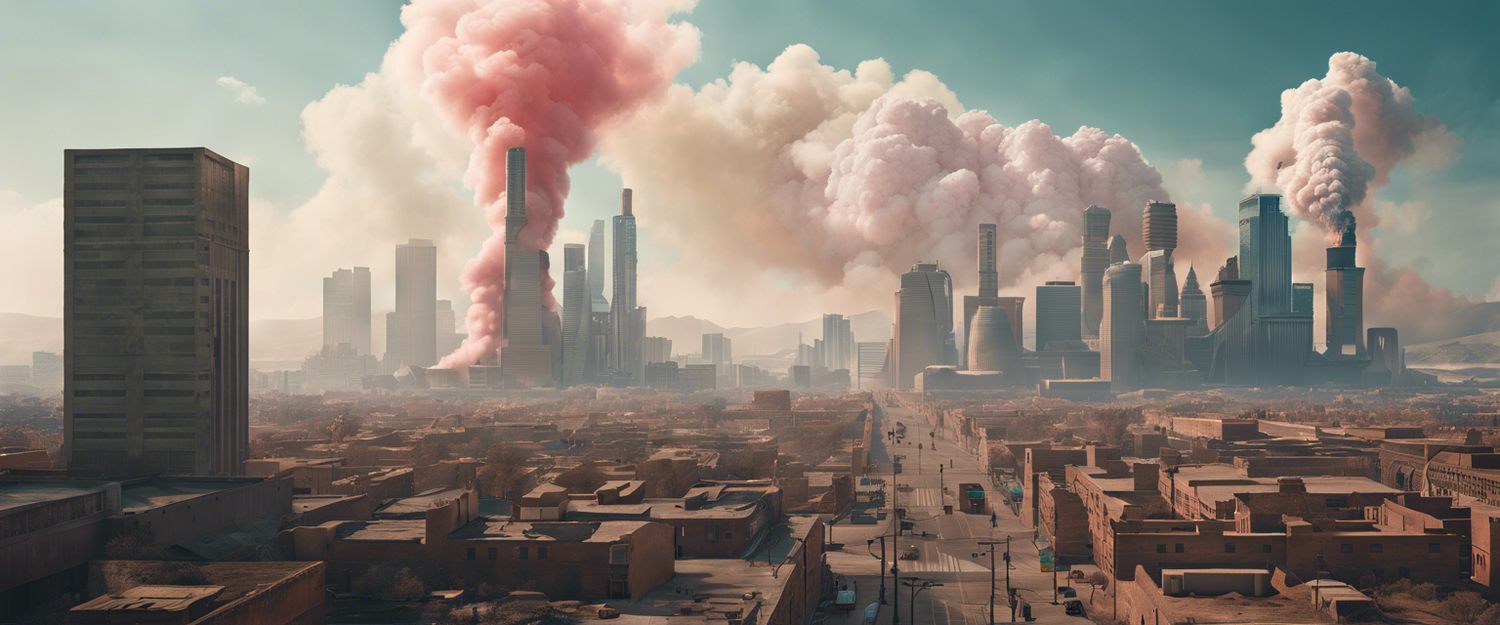The Evolution of Air Quality Since the Industrial Revolution
A groundbreaking new tool reveals the dramatic changes in air quality across major cities worldwide since the Industrial Revolution. This innovative project generates striking images comprised of colored stripes that represent annual pollution levels in various urban areas.
The project, spearheaded by researchers from notable institutions like the University of Leeds, University of Edinburgh, North Carolina State University, and the UK Met Office, illustrates stark contrasts in air quality from different regions, highlighting both the progress made and the challenges that remain. According to Kirsty Pringle, a project codirector from the University of Edinburgh, "These images make the invisible visible," shedding light on the often-overlooked perils of air pollution.
Understanding Pollutants and Their Impact
The primary focus of this initiative is fine particle pollution, specifically PM2.5, which consists of particulate matter less than 2.5 micrometers in diameter. These tiny particles, originating from sources like industrial smokestacks, vehicle emissions, and increasingly, wildfires exacerbated by climate change, pose significant health risks by penetrating the lungs and bloodstream.
Data collected by the researchers from UK Met Office estimates annual PM2.5 concentrations, effectively enabling a retrospective examination of air quality from 1850 to 2021. This extensive analysis utilizes both satellite and ground-level readings, dating back to the early 2000s, complemented by computer simulations to assess historical pollution trends.
Visualizing Air Quality Improvements and Challenges
The results of this research manifest as colorful stripes, with hues ranging from light blue to dark brown, representing the levels of air quality. The lightest blue indicates air quality levels below the World Health Organization's recommended threshold of less than 5 micrograms of fine particle pollution per cubic meter of air (5 µg/m³). Cities like London and Los Angeles have showcased significant reductions in pollution due to decades of rigorous environmental policies, particularly after the enactment of the Clean Air Act in the U.S. in 1970.
Disparities in Air Quality
However, the battle against air pollution is far from uniform. Many neighborhoods, especially those inhabited by people of color in the U.S., are disproportionately affected by air pollution due to proximity to highways and industrial operations.
Disturbingly, approximately 99% of the global population resides in areas where air quality fails to meet the World Health Organization's standards for PM2.5. Cities in low to middle-income countries, particularly in South Asia and Africa, are among the hardest hit, with places like Delhi and Abuja reporting extremely poor air quality.
Global Efforts and Future Outlook
Fortunately, there remains hope for improving air quality on a global scale. During the recent United Nations climate summit, 118 countries pledged to triple renewable energy capacities by 2030. A coordinated effort transitioning to renewable energy could enhance air quality while combatting climate change, benefiting all nations.
Visit the Air Quality Stripes website to explore visualizations for various cities, which resemble the trending climate warming stripes, a popular method for representing the increase in temperatures due to fossil fuel emissions.Conclusion: A Path to Cleaner Air
As Pringle stated, "The images show that it is possible to reduce air pollution; the air in many cities in Europe is much cleaner now than it was 100 years ago." There’s a tangible optimism that similar advancements can be achieved worldwide, paving the way for healthier futures.
Join the conversation: How have pollution levels in your city changed over the years? What actions do you think are most effective in tackling air quality issues?



اترك تعليقًا
تخضع جميع التعليقات للإشراف قبل نشرها.
This site is protected by hCaptcha and the hCaptcha Privacy Policy and Terms of Service apply.